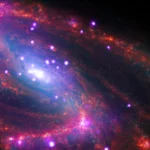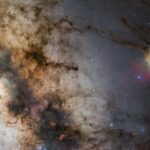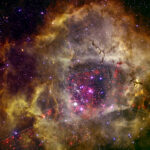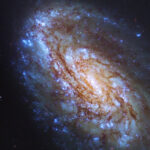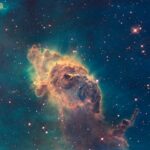NGC 6334 is one of the most active areas of massive star formation in our galaxy. The nebula hides newly formed bright blue stars, each of which has a mass nearly ten times that of our Sun and was born within the last few million years. While theoretically visible from Italy, where I live, these are a classic deep-sky pair in the Southern Hemisphere. In this shot, taken remotely from Chile, they were at zenith in the best possible conditions to capture their details and those of the Milky Way centre clouds surrounding them.
Looking rather like a cosmic feline foot protruding outwards from among the stars, NGC 6334 is also known as the Cat’s Paw Nebula or the Bear Claw Nebula, making it one of many Nebulae That Look Like Animals.
NGC 6334 may contain tens of thousands of stars, many of them concealed deep within the nebula’s dust. The nebula also contains a vast supply of material needed for star formation, roughly equal to a mass of 200,000 Suns.











![Space Streams - Nebula [Ambient] image](https://space-streams.com/wp-content/uploads/2024/11/space-streams-nebula-150x150.png)

